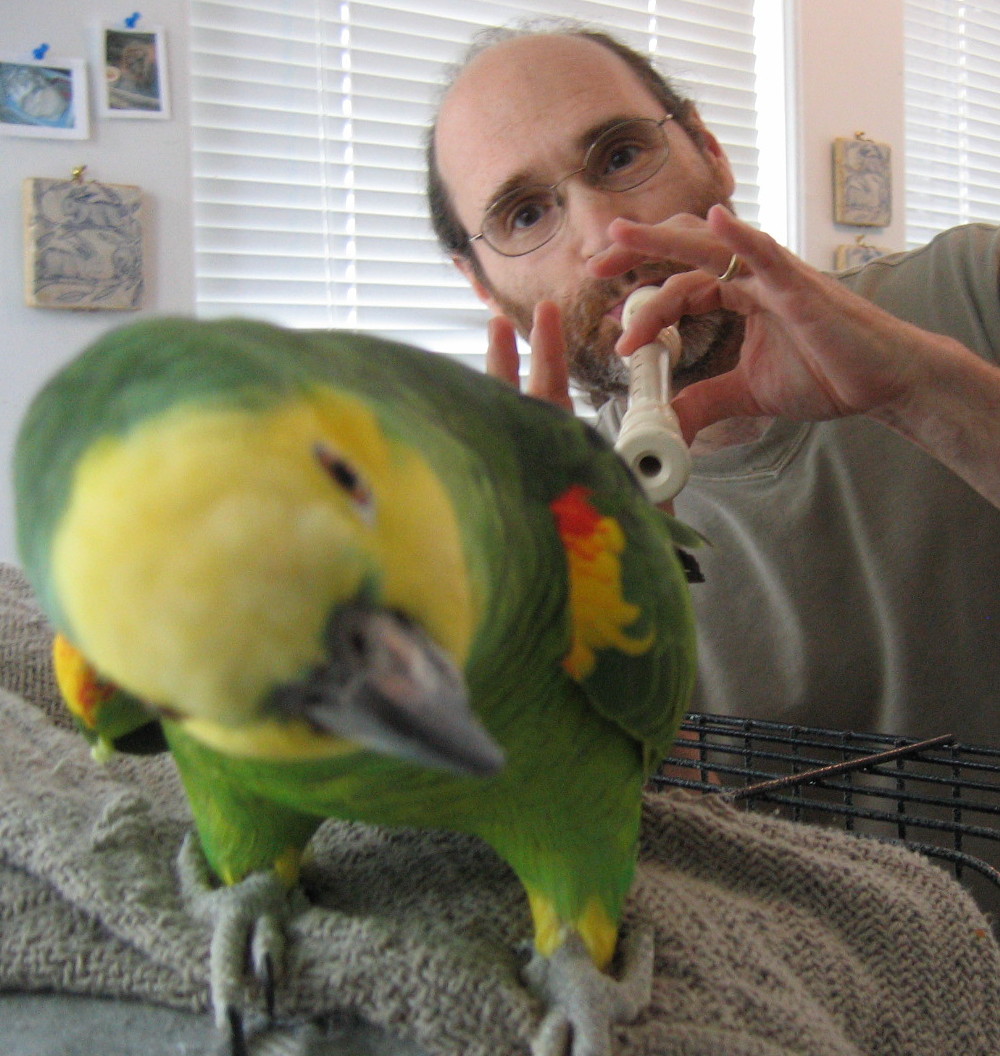For those of you who happened to do the TRY THIS! experiment for brass players, I hope you got something out of it. Syllables are created and used in sound production by wind or brass players whether it is conscious or not. What I find interesting is the subtle mix of syllables that are present in the ingredients of any sound not just one.
Players who tend to have low overtones in their sound and the shape of the sound is very open, can sometimes have difficulty projecting. When playing alone this type of sound can sound very full and large in size. But this type of sound if the 'oh' ingredient is not balanced with some 'ooh' or a soft 'ay' sound, it can easily get covered by sounds that have higher overtones in them. (Note: not all low overtoned sounds are open in quality, some can sound almost congested or plugged).
I am sure those who have worked into syllables have discovered the different ranges, pedal, low, mid, upper mid and high and 'super high' can be improved upon with the use of certain syllables. In my own case, it is the low range that I have to be the most conscious of in regards to syllable usage. After low Bb, I need to think 'ay' in syllable shape. This helps me to focus the tone and helps to regulate the amount of air going through the horn which is vital for me in that range because I do not have a large lung capacity.
So much could be said about the use of syllables and my research on it is quite extensive because of working with people for over 40 years and how it is another proof of how different we all are and not everyone can use the same concepts. Plus, we need to keep up with our own changing bodies and concepts if we want to continue our playing when those changes occur. Which makes me think, what a person thinks is a hard fact today, might not be tomorrow. I have certainly experienced this myself!
Friday, June 19, 2009
Subscribe to:
Post Comments (Atom)

2 comments:
Hi Norman!
I tried the syllable experiment on myself, and with about 30 of my private students.
I discovered with my students that there was always a better syllable than the one they were using on auto-syllable-pilot. With each one, it was like a light turned on, and their tone matured by several years in an instant. The most interesting facet was that the syllable was never the "text-book" syllable or the one they learned in band class. But, it unlocked a series of new possibilities for them to explore in their own practice.
For my own playing, I discovered that the "u" syllable stabilized and clarified my range from middle f down to the f below the staff. This was good because I always felt that area to be the weakest register in my playing. And now, it sounds a lot more how I imagine it to sound.
Thanks for shaking up the ant hill hear in Orlando!
Joey
Great Joey! Glad you have had some interesting experiences with students and your own playing. I have found with some french horn players that the "u" sound works better in the low range than 'oh' formation. Often times it depends on embouchure grip and firmness. If the chops get to loose going into the low range, the 'oh' shape makes it wider and does not offer as much structural support, the 'u' sound can offer this support.
Syllable shifts are a bit like embouchure breaks or gear shifts. There is a point when something else is needed to compensate the change in resistance. Thats when I discovered the 'ay' sound. That is what helps me stabilize in the lower range except for the pedal range that changes to "ah". So there you go! Good work! :-)
Post a Comment